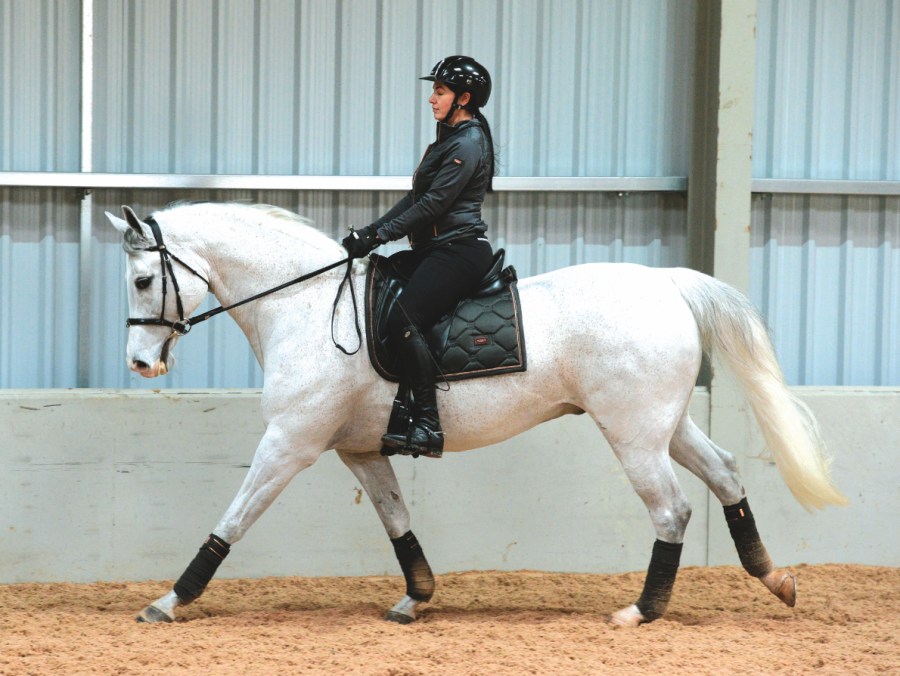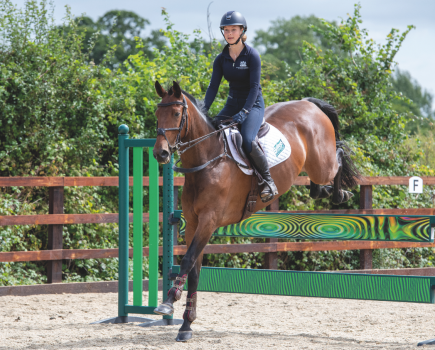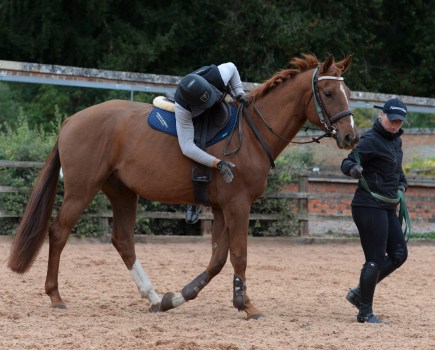Professor Hilary Clayton, a leading equine research scientist and vet, discussed the ways riders can enhance the performance and welfare of their horses at the Saddle Research Trust Conference. She explored the biomechanical affects of the rider — what happens to a horse’s movement in response to the rider’s weight and aids — based on a wealth of scientific research, published by herself and her peers.
Six ways to improve your horse’s way of going and comfort:
1. Ride round
Professor Clayton said that any time we add weight to a horse’s back will hollow its spine, and the greater the weight of the rider, the greater the tendency to hollow the back.
This hollowing can predispose the horse to conditions like kissing spines, sois a compelling reason to encourage a horse to move in a rounded carriage.
“All horses will benefit from core training that strengthens their backs, this can be done from the ground or under saddle,” Professor Clayton said.
“These can teach a horse to activate muscles that activate the spine and strengthen muscles that hold spine in a rounded position.”
2. Keep fit
Another way to promote a healthy spine is to keep the horse fit.
“Heavier riders should pick an appropriate horse with strong confirmation and keep the horse fit,” Professor Clayton said. “Fit horses are better able to carry more weight.
“Selecting a horse that has good conformation and keeping your horse fit will have a preventative effect against back problems.”
3. Stand up
Rider technique also affects the forces applied to a horse’s back under saddle.
“Peak force is lower when rider stands in stirrups and often the peak force would be in the most damaging phase of the stride,” said Professor Clayton.
“Standing trot has lower peak forces and distributes weight more evenly. The rider is using their own joints to flex as the horse’s body moves upwards and as the horse goes down, the rider’s joints move down again.
“Standing in stirrups has also been shown to be very stable and gives the horse the most freedom of movement.”
She said standing in the stirrups could be beneficial to young horses, in warm up, especially for horses with back pain, and during rehabilitation from back injuries.
4. Sit straight
Rider asymmetry is likely to be associated with asymmetrical loading of the horse’s back and could eventually lead to unsoundness.
“Both horse and rider are usually asymmetrical to some degree,” said Professor Clayton. “This loading is transmitted through the horse’s body and limbs.”
5. Minimise disruption
Professor Clayton said riders must judge whether they should intervene depending on the environment they are working in.
“If the horse is trucking along nicely, often when rider intervenes in effort to improve [the work] they deteriorate,” she said.
“This highlights the need for a different approach in training than in competition. Often in competition leaving alone is best thing to do.”
6. Be consistent
Harmony under saddle involves synchrony between the timing of movements between rider and horse, Professor Clayton adds.
Horses will perform better if ridden consistently and predictably, she concluded.
Hilary shared these insights at the Saddle Research Trust Conference (11 December, 2022).









